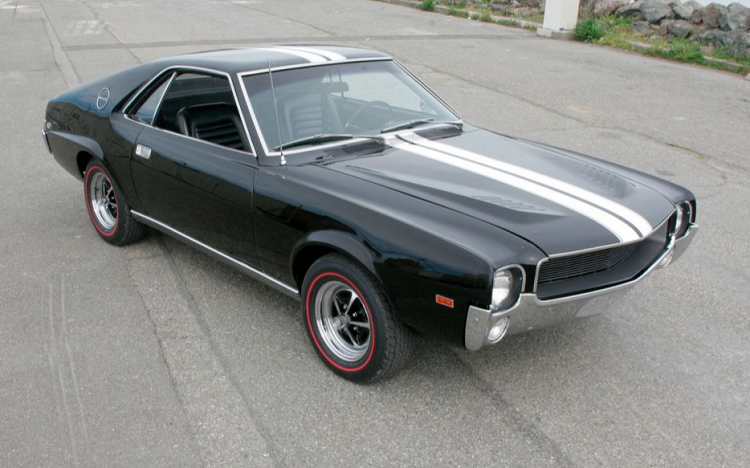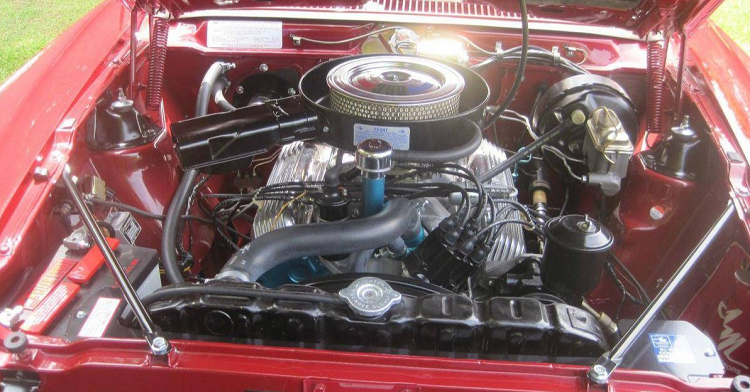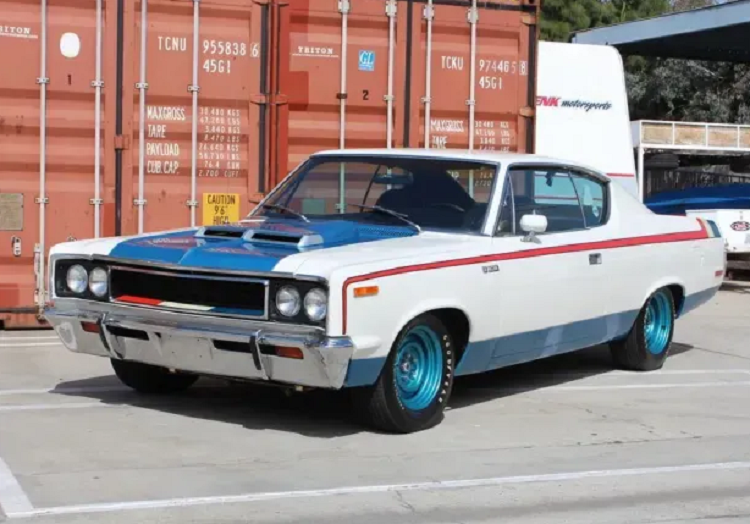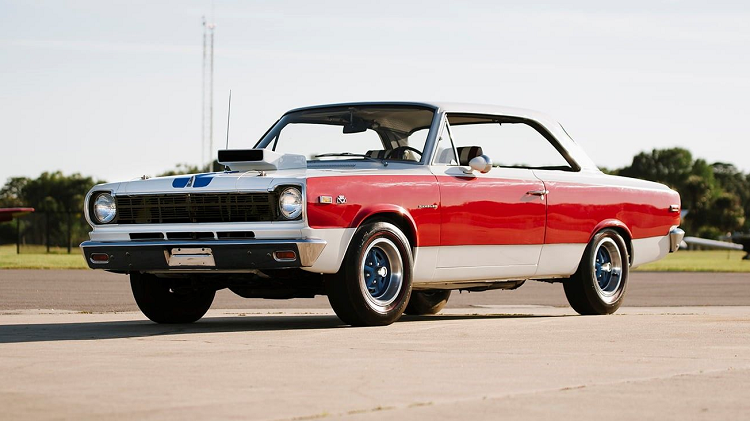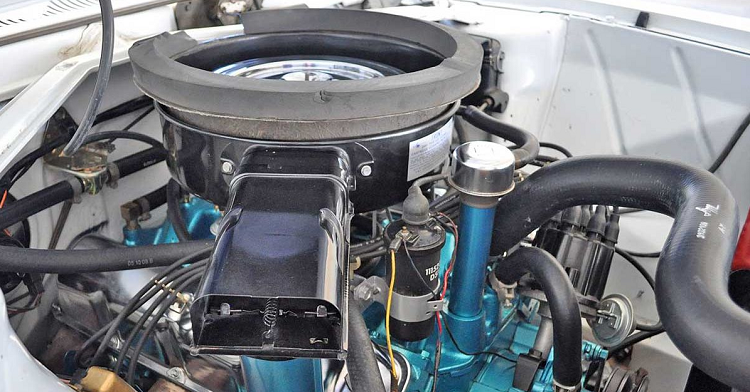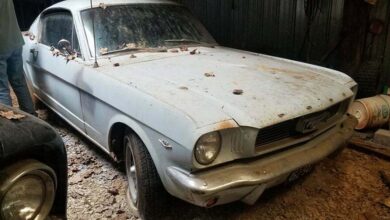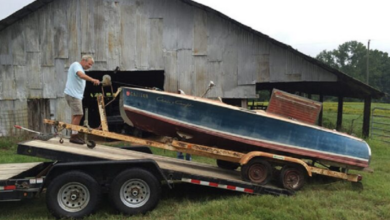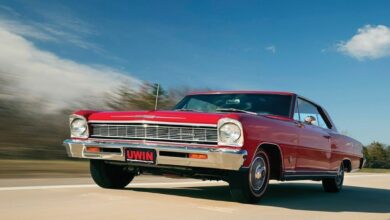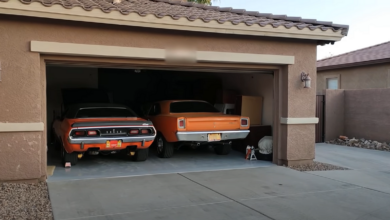Top 10 Of The Coolest Cars AMC Ever Made
Everyone knows about the muscle car wars between GM, Ford, and Chrysler in the 1960s, but there was a fourth competitor at play…ever heard of them? AMC (American Motors Corporation) was started in 1954 when Nash, Hudson, and Jeep consolidated into one company. Right off the bat, AMC had a massive disadvantage in the budget department, and less of a pedigree compared to brands like Dodge, Chevy, Ford, and Pontiac. To stay afloat AMC began to make economy and family cars, finding a market many manufacturers forgot in the race for higher horsepower and more NASCAR and NHRA wins. That said, AMC was no stranger to the muscle car game and made some standout cars of the muscle car era.
AMC produced their first V8 car in 1956, beginning a string of quirky muscle cars from the small automaker. Cars featured patriotic color schemes, strange styling, and a range of weird options not found in many cars at the time. AMC even found some success in Trans-Am and NASCAR racing in the 1970s! Things went south after the gas crisis though, and eventually Chrysler bought out AMC for the rights to own Jeep and rebranded AMC as Eagle. Eagle went defunct in 1998, ending a long and interesting history of a car brand not afraid to do things differently. So if you’re tired of GM, Ford, and Chrysler, here are 10 of the coolest AMC muscle cars!
10
1971 Matador Go-Machine
AMC moved The Machine options package to the Matador in 1971 due to falling sales of the 1970 Rebel Machine. The Go-Machine package was offered on the Matador coupe, but one could essentially have a Go-Machine Matador sedan or wagon by checking off individual options. The Go-Machine package allowed the cars to be equipped with a 4-speed manual transmission, Twin Grip differential (limited slip), and heavy-duty suspension. A car with the Go-Machine package could be had with either a 360 or 401 cubic inch V8. A Matador Go-Machine equipped with the 4-speed and 401 V8 was good for a six-second 0-60, not too bad for an engine considerably smaller than the 426 HEMI or 454 Chevy.
Production numbers were low, estimates are between 50-70 cars built, making the Matador Go-Machine one of the rarest muscle cars ever. The options package went away completely by 1972 due to falling sales and increasing emissions standards and insurance cost.
9
1971 Gremlin X
A Gremlin? Yes, a Gremlin. The Gremlin was launched in 1970 as AMC’s version of economy cars like the Pinto, Vega, and Beetle. AMC couldn’t resist making the economy car fast though, so in 1971 they released the X package. Ordering the X package equipped the Gremlin with a 304 cubic inch V8 and an appearance package that featured chrome wheels and bright paint. The little 304 V8 was only good for 150 horsepower, coming at a time when manufacturers were beginning to de-tune their engines.
Some may argue if the Gremlin X is deserving of being called a muscle car, with many even hating the car, V8 or not. The haters typically lamented the anemic power plants and the Gremlin’s strange looks. Sales don’t lie though, and AMC sold 53,480 Gremlins in 1971.
8
1957 Rambler Rebel V8
Move aside Pontiac, AMC beat you to the chase. In 1957 AMC released the midsize Rambler Rebel, a midsize sedan equipped with a V8 and sporty options…sounds like a familiar formula, doesn’t it? AMC shoehorned a 327 cubic inch V8 into the family car and offered either an in-house 3-speed stick or a GM built 4-speed automatic. The Rambler Rebel was good for 255 horsepower and could get to 60 mph in under 8 seconds, blinding fast for 1957.
Before 1957 AMC was known for making small economy cars like the Metropolitan. The Rambler Rebel opened doors for AMC and could be credited as being the first muscle car. The Rambler Rebel sold well and made AMC a contender in the performance car sector. The Rambler Rebel could very well be credited for the existence of the other cars on this list.
7
1965 Rambler Marlin
By 1965 the muscle car wars were in full swing and there was a gap in the market for buyers who wanted a well-appointed but sporty coupe. AMC saw the opportunity and jumped on it, launching the Rambler Marlin in 1965. The Rambler Marlin was based on the mid-size Rambler but was given a fastback roof and could be had with a 327-cubic inch V8, bucket seats and console. The Rambler Marlin proved popular and made headway in the personal luxury segment.
The Rambler Marlin had to compete alongside legends like the Ford Thunderbird, Dodge Charger, and Buick Riviera. The Rambler Marlin was canceled in 1967, along with the first-generation Dodge Charger. After the Rambler Marlin was completely scrapped buyers either moved to the Javelin or found a new brand altogether. The Rambler Marlin can be thanked for revolutionizing the personal-luxury market though and leading the way for cars like the Chevy Monte Carlo and Mercury Cougar.
6
1968 Rebel SS/T
In 1967 AMC launched the Rebel, a midsize car named after the brand’s first muscle car released a decade before. The Rebel was designed to compete against cars like the Torino, Chevelle, and Roadrunner, but car buyers stuck with the big three, making the Rebel somewhat forgotten. The Rebel came with any performance feature Ford, Chevy, or Plymouth had at the time, and then some. Designers used the popular coke-bottle styling and engineers crammed a 390 cubic inch V8 into the engine bay. The SS/T offered customers more luxury and performance features. The Rebel was AMC’s first line of cars to receive the Gen II V8s as well, boosting performance.
Rebel sales were low despite favorable reviews from critics and racers alike. In 1967 a Rebel was driven at high speeds for 30 hours straight across Baja California, a testament to the car’s toughness and reliability. Only one option package trumped the SS/T, but we’ll get more to that later.
5
1971 Hornet SC/360
With gas prices on the rise and the EPA cracking down on pollution, compact muscle cars became king. AMC hopped on the bandwagon, using their compact Hornet as a base. AMC threw a 360 cubic inch V8 in and put Twin Grip outback. A 4-speed equipped Hornet SC/360 could get to 60 in six seconds and made an impressive 285 horsepower. The Hornet SC/360 only weighed 3,150 pounds, so the 285 horsepower went a long way.
The Hornet was popular and allowed enthusiasts to buy a muscle car without angering the EPA or their wallets. Unfortunately, the Hornet has been mostly forgotten about, partly due to the legend of its competitors like the Duster and Nova. These can still be picked up for a good price, so if you want a piece of AMC muscle in your garage this may just be the car for you.
4
1968 AMX
Don’t have enough dough for a split-window Corvette? Well AMC has got you covered. In 1968 AMC launched the AMX to compete with the Corvette. The Javelin and AMX were produced together, so they’re often confused. The AMX was shorter, had two seats and was more of a sports car, while the Javelin was longer, sat four and was considered a pony car. The AMX could be equipped with a 325 horsepower 390 cubic-inch V8. A highly modified AMX was taken to the Bonneville Salt Flats and was able to hit 200 mph according to Breedlove, the company that modified the car.
The AMX might be more well known for the slew of custom variants it had. The most popular probably is the Playmate AMX. Playboy partnered with AMC to award one of their models with a new AMC AMX. The Playmate AMX was equipped with a 390 V8, automatic transmission, A/C, and a custom bright pink color. The car was gifted to Angela Dorian.
3
1970 Javelin Trans-Am
Trans-Am racing started in 1966 and quickly took America by storm. Trans-Am racing gave American muscle cars a chance to prove their handling prowess, no longer would they be bound by left turns and straight line drags. AMC launched the Javelin to compete with pony cars like the Camaro, Barracuda, and of course the Mustang. Pony cars were the category of cars used to compete in Trans-Am racing due to their smaller size and better handling characteristics than that of full-size muscle cars. The Javelin was a back-to-back champion of the series in 1971 and 1972.
The Javelin Trans-Am was released to give consumers a road-going version of the car they fielded in 1970, but more importantly, meet the SCCA’s homolgation standards. Interestingly, the Javelin was offered with the small 304 cubic inch V8, for engines bigger than 305 cubic inches were banned in Trans-Am racing. The 304 V8 was good for 315 horsepower. Another notable feature was the red, white, and blue paint scheme, though this wasn’t the first or last time AMC used a patriotic color pattern on a car.
2
1970 Rebel Machine
AMC needed to make the Rebel competitive with the performance trims featured on its midsize competitors like the Chevelle SS and the Charger R/T, thus The Machine package was born. The Machine Package gave the Rebel heavy-duty suspension, Twin Grip, standard four-speed stick, an aggressive rear gear ratio, and a massive 390 cubic inch V8 that made use of a Motorcraft carburetor. The dyno put the engine at 340 horsepower, and early testing put the quarter-mile at 14 seconds. The Rebel Machine was complete with the patriotic paint scheme seen also on the Javelin and another car we’ll get to in just a moment.
The Rebel Machine was just a little too much, a little too late. By 1970 insurance companies were raising premiums on muscle cars, or outright refusing to cover them. Many muscle cars met their fate being wrapped around telephone poles, smacking the wall at a track, or being impounded after a night of street racing. AMC’s Rebel Machine only lasted one year, but its legacy has thankfully lived on.
1
1969 Hurst SC/Rambler
A small car with a big engine—the simplest formula for going fast that is often overlooked. AMC wasn’t afraid to get back to basics though and employed the help of performance shop Hurst to help them. AMC crammed the 390 cubic inch V8 into the compact Rambler and gave it plenty of racing goodies like Twin Grip, glass pack mufflers, and a paint scheme that’d make Uncle Sam proud.
The SC/Rambler was good for a 14-second quarter-mile, on par with ‘Cudas and Mustangs. A 390 cubic inch V8 in a car that weighs just 3,000 pounds is ridiculous and is just as awesome as it sounds. Some racers in the 1960s even took one Baja racing…and won! If that isn’t a testament to the toughness and performance of this little giant we don’t know what is.












